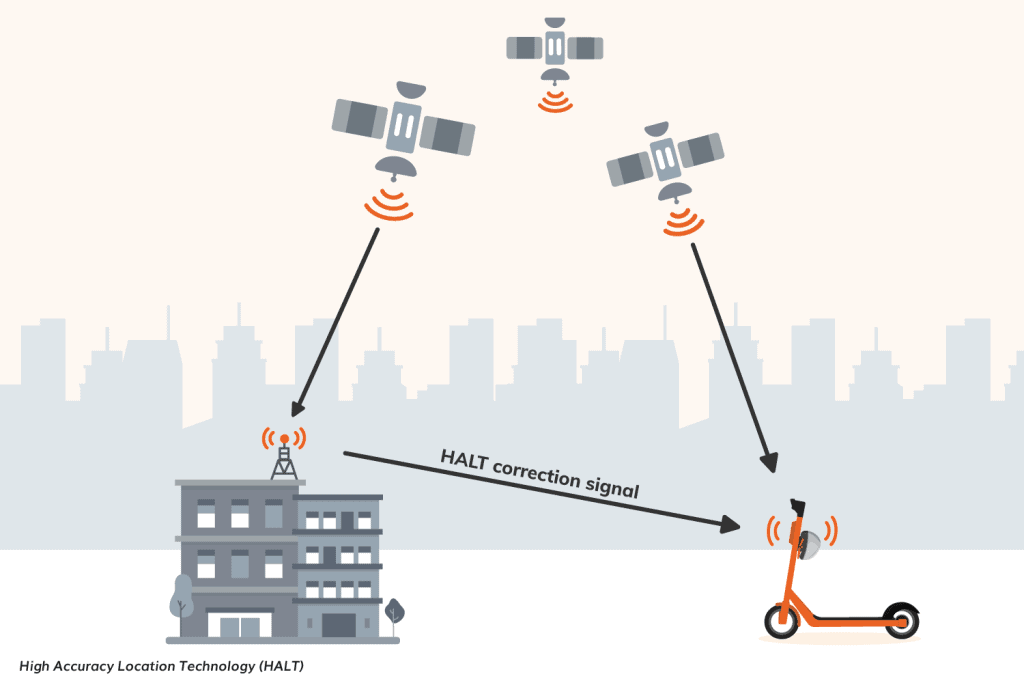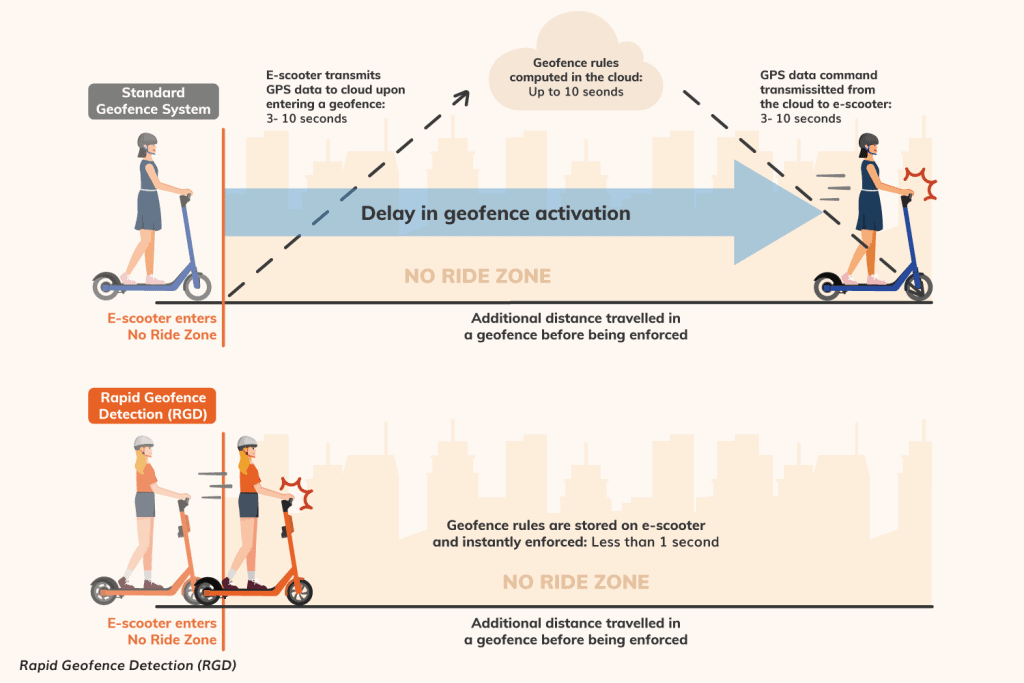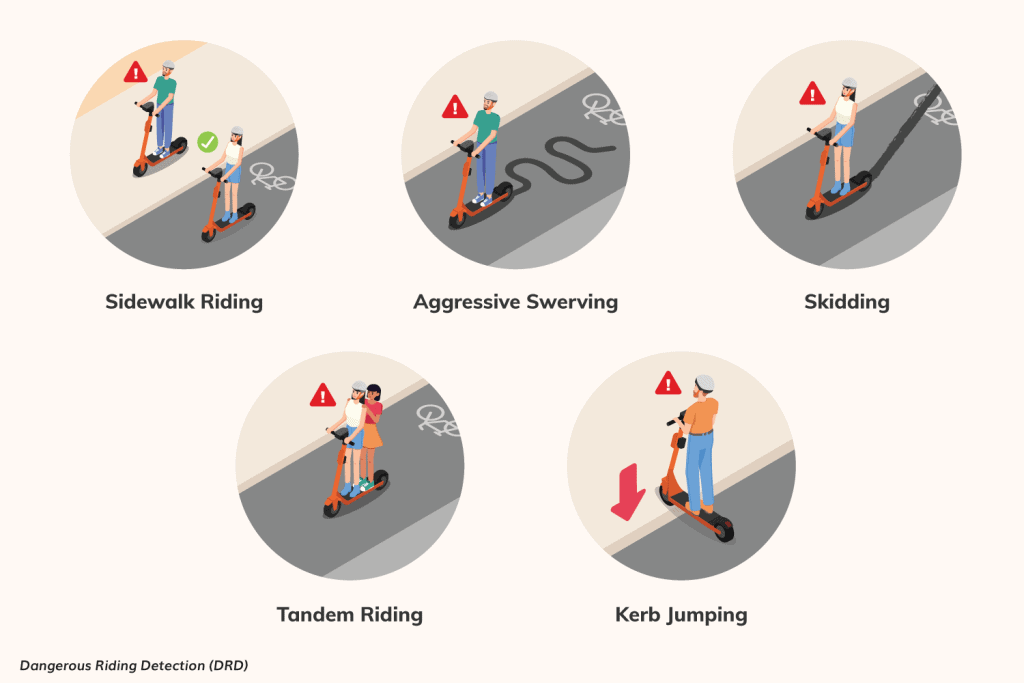Singapore-based Neuron Mobility will conduct a six-month trial of its new “e-scooter brain” across four cities in Australia, Canada and United Kingdom.
Fitted into the company's N3 e-scooters, the new brain includes a range of newly developed technologies such as the High Accuracy Location Technology (HALT), the Rapid Geofence Detection (RGD), and an array of multi-function sensors and a new proprietary vehicle operating system.
Used together, these features will facilitate what is touted to be the world’s first Dangerous Riding Detection (DRD) system for e-scooters, which allows Neuron Mobility to warn of unsafe behaviours in real time while also profiling users and incentivising safe riding.
“Our trial is the first of its kind - we’ll have 1,500 e-scooters in cities across the world being tested in real-world situations to improve rider behaviour and safety. With the introduction of ultra-precise location, rapid response to geofencing, plus an array of new sensors we’ll be able to correct rider behaviour while also putting the cities more in control of their e-scooter programmes,” said Zachary Wang, CEO of Neuron Mobility.
The e-scooter brain will initially be beta tested on 1,500 e-scooters in Ottawa in Canada, Brisbane and Darwin in Australia, and Slough in the United Kingdom. The trials will take place over a six-month period and will assess how riders behave in all kinds of real-life situations and how good riding can be encouraged. The findings will be evaluated, the technology refined, and selected features will be rolled out across Neuron’s fleet internationally over the next six to 12 months.
Wang pointed out that there has been plenty of industry talk from micromobility operators about how to apply new technology to better control e-scooters in cities.
“But until now it’s mostly been aspirational or theoretical,” he said.
Under the hood: HALT and RGD
Neuron Mobility claims that HALT is the next step in e-scooter precision location tracking. Using a sophisticated fixed base station within a city, which connects wirelessly to a receiver in the e-scooter, it corrects GPS inaccuracies, allowing every vehicle’s location to be tracked in real-time down to a range of within 10cm. This is at least 50 times more accurate than the e-scooter industry’s average GPS location system which plots a vehicle’s location to 5 - 10 metres or more within cities

Meanwhile, the company’s Rapid Geofence Detection (RGD) feature works with HALT to give unparalleled control of how e-scooters are managed in cities. With RGD, when an e-scooter crosses a geofence, such as a no-ride or go-slow zone, the vehicle can respond in 0.3 seconds, rather than the 6-12 seconds it currently takes most rental e-scooter models to react. This is achieved by storing geofence data -- and rules of how an e-scooter should behave when it crosses a geofence -- in the e-scooter’s brain on the e-scooter rather than in the cloud, which significantly cuts down on processing time.

Combining the high precision location capabilities of HALT with the ability to react almost immediately to geofences using RGD, provides Neuron with the ‘holy grail’ that many e-scooters operators, and City transport managers, have been searching for. Using these two technologies Neuron will now be able to detect and control sidewalk riding, provide high accuracy geofencing, and also designate precise smart parking locations.
Multiple sensors used to monitory safety
The e-scooter brain also includes an array of sophisticated multi-function sensors, which combined with the company’s proprietary vehicle operating system, allow Neuron’s e-scooters to operate a Dangerous Riding Detection (DRD) system.
It will monitor, in real-time, a range of bad riding habits such as sidewalk riding; aggressive swerving; skidding; tandem riding; and, ‘kerb jumping’. Using the data, Neuron will be able to deliver immediate alerts or follow up later with targeted rider education modules. The system will be able to profile different types of riders, giving them an individual safety rating, which provides the opportunity to incentivise good riding behaviour as well as tackle problem riding.

Wong said: “The launch of our Dangerous Riding Detection technology allows us to profile our riders, and we can take a carrot and stick approach to improving behaviour. In some cases, alerting a rider to a dangerous behaviour at the exact moment it happens, then immediately educating them on how to rectify the situation, could help to change bad habits and improve safety. Long-term we can give all riders an individual safety rating. It will allow us to incentivise good behaviour, target certain riders for refresher training, and also ban rogue riders and repeat offenders for riding dangerously.”
Meanwhile, Neuron’s next-generation N3 e-scooters have been purpose-built to a commercial grade, specifically for renting and rider safety. They have visibly larger, 11.5” wheels and wider footplates than other e-scooters, and deliver the highest levels of safety, stability and rider experience, to give users an extra level of confidence.
The e-scooters feature the world’s first app-controlled Helmet Lock, which secures a safety helmet to the e-scooter, electronically releasing it to use at the start of the booking. Riders benefit from multi-language voice guidance to educate them on how to travel safely; a Follow My Ride feature allows riders to share their trip with friends and family in real time for added safety; and an emergency button can tell if someone has had a fall, then help them call the emergency services. A topple detection feature alerts Neuron’s operations team if an e-scooter has been left on its side so it can be repositioned. Geofencing technology control where e-scooters are ridden and parked, and how fast they can travel in certain areas.


